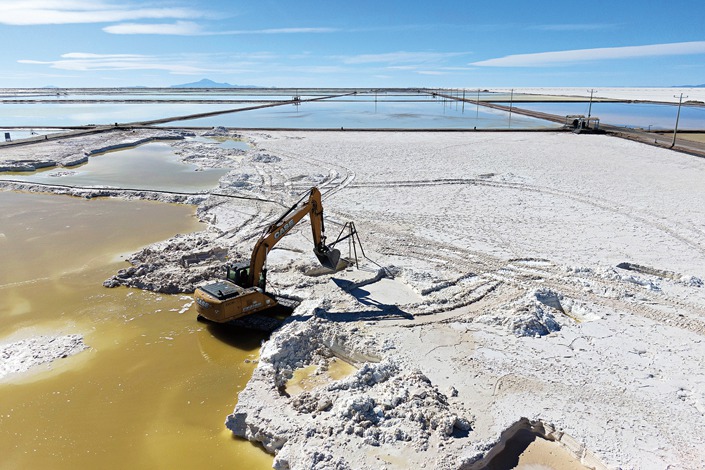
You are receiving the free biweekly version of China Green Bulletin. Sign up here for our email to keep up to date on green, energy and ESG news out of China.
In Depth
Bolivia has the world’s largest reserves of the key EV battery raw material, but political and practical obstacles have prevented it from becoming a significant global supplier. Find out why Chinese companies are so interested in the South American nation’s lithium reserves and what they’re doing to expand their operations there.
Top News Items
China’s energy consumption increased nearly 3% in 2022
China’s energy consumption increased 2.9% year-on-year to 5.41 billion tons of standard coal equivalent, according to the National Bureau of Statistics’ latest annual National Economic and Social Development Statistics Bulletin. Coal consumption increased by 4.3%, while that of crude oil and natural gas decreased by 3.1% and 1.2%, respectively. Electricity consumption increased by 3.6%.
The consumption of clean energy, including hydropower, nuclear, wind power, solar power and others accounted for 25.9% of the total, with a 0.4% year-on-year increase. In comparison, coal accounted for 56.2% of total energy consumption, up 0.3% from last year.
Yunnan hydropower shortage hits aluminum output again
Southwestern China’s Yunnan province has ordered aluminum producers to cut production to reduce energy consumption, as the province faces a severe shortfall of hydroelectricity output. Industry researchers estimated the cut would lower aluminum production by 650,000 tons to 800,000 tons, as much as 15% of the province’s annual capacity.
This production cuts are the second in six months in the hydroelectricity-dependent province. Hydropower plants in the province are in the middle of the traditional dry season that runs from December to April. Last September, local authorities told aluminum smelters to reduce electricity use after a record heat wave hit the region.
Mercedes-Benz joins the EV battery recycling drive in China
The German auto giant teamed up with China’s top battery-maker CATL and a recycling specialist GEM, as the world’s largest electric vehicle (EV) market faces the prospect of millions of batteries that will be discarded in the years ahead. Under the deal, GEM will receive end-of-life batteries from Mercedes-Benz China and remove their key materials, including nickel, cobalt, manganese, and lithium, which will then go to CATL for use in new batteries for the carmaker.
China is the world’s largest EV market, with 6.5 million new-energy vehicles (both EVs and hybrids) sold last year. China industry rules dictate that EV batteries should be discarded and recycled if their capacity falls below 80% of the originally designed amount, raising the prospects of developing a battery recycling sector.
CNOOC opens China’s largest single-phase storage facility
China’s largest offshore oil and gas producer completed a commercial crude reserve storage complex in Dongying Port of East China in February. The project is now being filled as part of trial operations. With 50 tanks each capable of holding 100,000 cubic meters of crude oil, the facility could store 4.25 million tons at full capacity.
The project will beef up China’s crude supply capacity and play a role in emergency preparedness amid a highly volatile global market. As the largest importer and second-largest consumer of crude oil, China in recent years has been expanding its oil storage capacity. China keeps its strategic petroleum reserve level a secret. The latest public available data was in 2019 when the energy regulator disclosed the country had oil inventories, including state reserves and stocks at oil firms and commercial tanks, to last 80 days.
Sinopec launches green hydrogen project in Inner Mongolia
China Petroleum and Chemical Corp., better known as Sinopec, launched its first green hydrogen demonstration project in Ordos in the Inner Mongolia autonomous region. The 5.7 billion yuan ($828 million) Inner Mongolia Erdos Wind-Solar Green Hydrogen Project covers wind and photovoltaic power generation, power transmission and transformation, hydrogen production by water electrolysis, hydrogen storage and transport.
The abundant solar and wind energy resources in the Ordos area will be used to generate electricity and hydrogen. Once started, the project could produce 30,000 tons of green hydrogen annually and reduce carbon dioxide emissions by 1.43 million tons.
You can update your newsletter preferences here.
Follow the Chinese markets in real time with Caixin Global’s new stock database.







